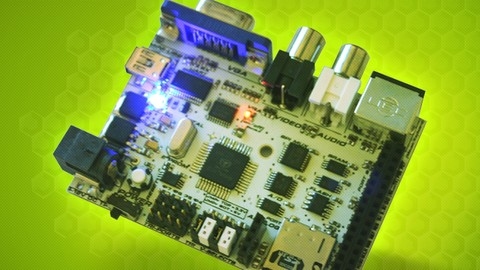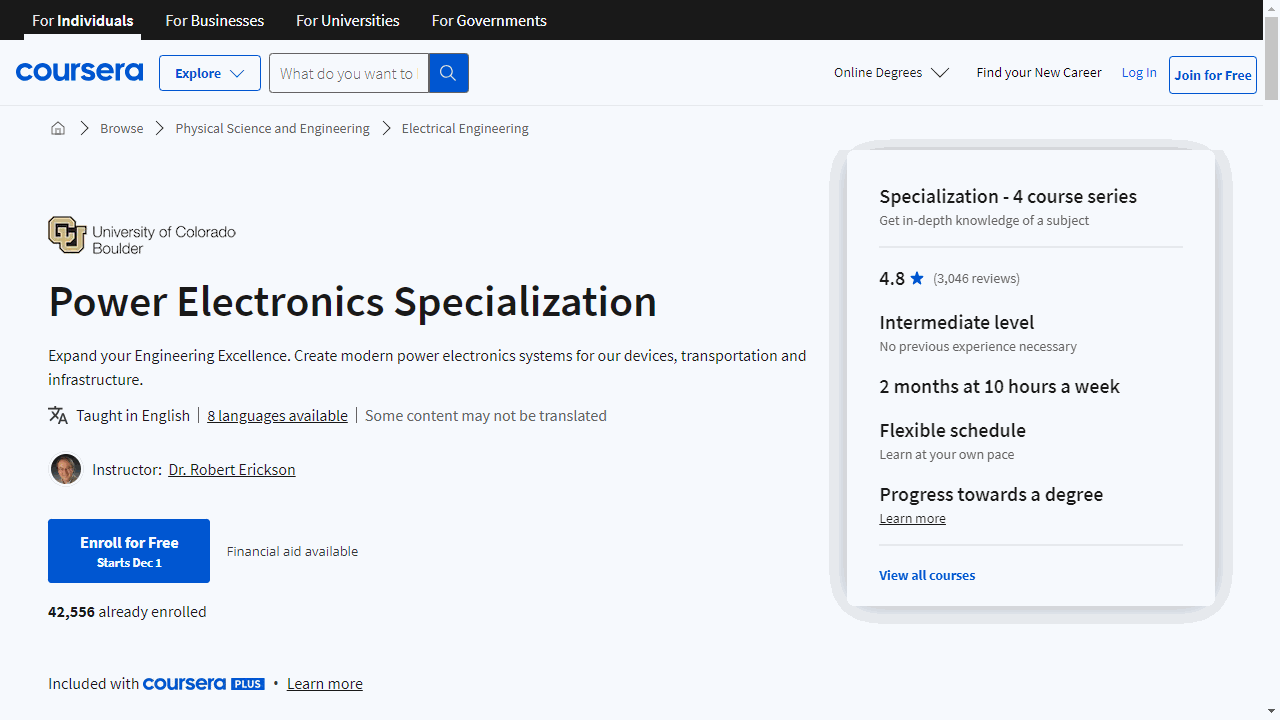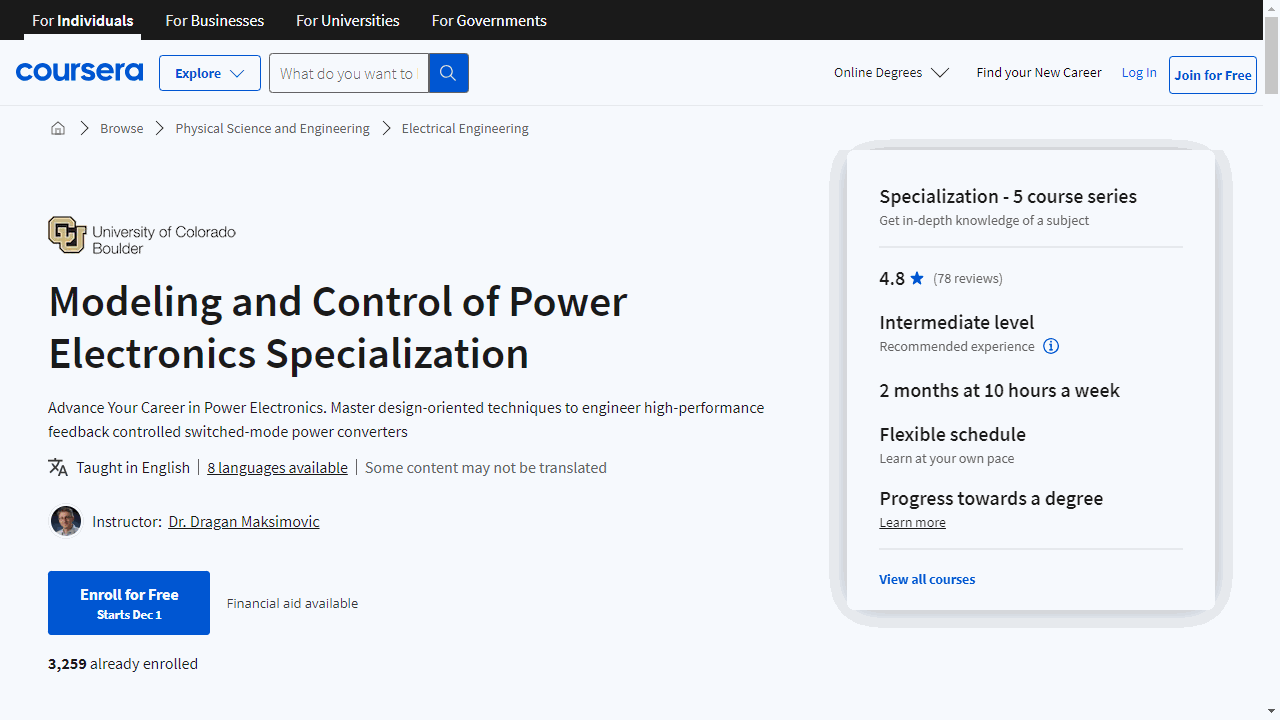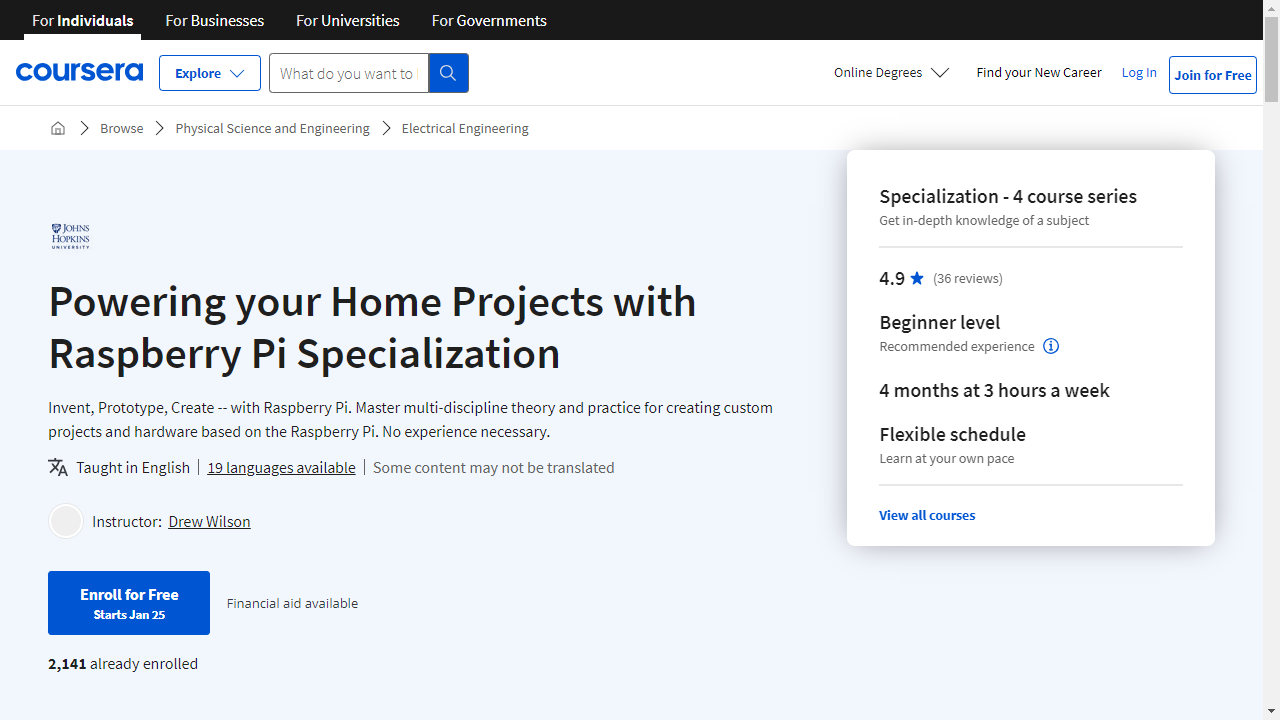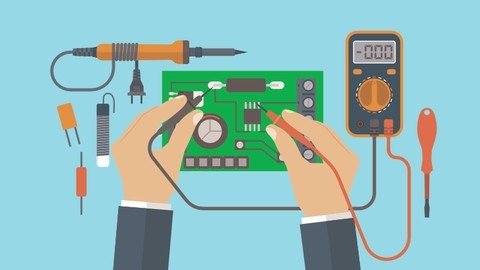Electronics is the fascinating field that deals with the study and application of electrical circuits involving active components like transistors and integrated circuits.
Understanding electronics is crucial in today’s technology-driven world as it forms the foundation of countless devices we use daily, from smartphones and computers to medical equipment and even kitchen appliances.
By delving into this field, you can gain valuable skills in designing, building, and troubleshooting electronic circuits, opening up a world of opportunities in various industries.
Finding the right electronics course that caters to your learning style and goals can be a challenge.
You might be seeking a course that provides a solid foundation in electronics principles or one that focuses on specific applications like PCB design.
With numerous options available, it’s easy to feel overwhelmed.
Based on our research, the best electronics course overall is Crash Course Electronics and PCB Design on Udemy.
This comprehensive course takes you from the basics of electronics all the way to designing your own printed circuit boards, offering a blend of theoretical knowledge and practical skills.
The course’s hands-on approach and real-world project examples make it an excellent choice for both beginners and those looking to enhance their electronics expertise.
While Crash Course Electronics and PCB Design is our top recommendation, we understand that you might be looking for something more specific.
Don’t worry; we’ve compiled a list of other exceptional electronics courses covering various aspects of this exciting field.
Read on to discover the perfect course to ignite your electronics journey!
Crash Course Electronics and PCB Design
Provider: Udemy
This Udemy course takes you from the fundamentals of electronics to designing your own printed circuit boards (PCBs) using CircuitMaker software.
Even if you’re starting from scratch, you’ll learn everything from the ground up.
You will start with the basics of electronics and build up your knowledge to more advanced topics like AC circuit analysis, power supply design, and digital logic.
The course uses a practical approach with real-world examples and demonstrations showing you how to build circuits and projects.
For example, you will learn about different circuit components such as resistors, capacitors, transistors, and diodes and use them to build circuits on breadboards, experiment with soldering, and learn how to choose components for your designs.
This course goes beyond the basics of analog electronics and explores the exciting world of digital electronics.
You will learn to work with logic gates, understand Boolean algebra and timing diagrams, and build digital circuits like counters and decoders, culminating in building a calculator from scratch.
This course also provides a unique opportunity to understand the design process of a complete product, walking you through three project designs, including a magic wand, a 555 timer-based organ, and even a Simon game based on the Arduino platform.
Power Electronics Specialization
Provider: Coursera
The Power Electronics Specialization on Coursera equips you with a deep understanding of designing and controlling electric circuits for efficient power conversion and management.
This specialization delves into the intricacies of energy flow in modern electronics, spanning applications from simple phone chargers to complex electric vehicles.
You start with the fundamentals of switched-mode converters, the control centers of power circuits, learning to calculate voltage, current flow, and efficiency.
Imagine designing a USB power regulator—this specialization gives you the tools for that.
You then advance to more complex converter circuits, understanding how components like power diodes, MOSFETs, and IGBTs manage electricity flow.
You’ll explore the discontinuous conduction mode, a specific power management method used in applications like H-bridge inverters found in grid-tied solar power systems.
Next, you transition into designing feedback systems for these converters, learning to model their behavior and fine-tune power output for specific performance goals.
This involves regulating output voltage, controlling response times, and minimizing disturbances.
Finally, you dive into the world of magnetic components, crucial in power electronic circuits.
You’ll learn about inductors and transformers, their properties, concepts like air gaps, magnetizing inductance, and how to model energy losses in these components.
This specialization culminates in the ability to analyze and design a variety of power converters, opening doors to opportunities in renewable energy, electric vehicles, and consumer electronics.
You gain a strong foundation in power electronics, from understanding individual components and their interactions to confidently tackling real-world applications involving switched-mode power converters.
Electricity & electronics - Robotics, learn by building
Provider: Udemy
This course starts with the fundamentals of electricity, covering things like resistance, conductance, and electrical safety.
You delve into DC and AC electricity, learning the differences and why safety is paramount, especially with higher AC voltages.
You discover Ohm’s law and how to use a multimeter, a tool for measuring voltage, current, and resistance in circuits.
You then explore essential electronic components like resistors, capacitors, and diodes.
You learn to read schematic diagrams, like blueprints for circuits, and build your first circuits on a breadboard.
You even discover how to make variable resistors and capacitors from scratch.
The course then introduces microchips, specifically the popular 555 timer, showing you how to build a simple flashing LED circuit.
You’ll master soldering, essential for creating permanent electronic circuits.
You’ll explore voltage dividers, learning how they work and why they’re important.
You’ll then build a voltage-controlled oscillator (VCO), a circuit that creates a signal whose frequency is controlled by a voltage.
This VCO will be used to create a siren circuit.
You’ll also learn about inductors and their role in circuits.
You will discover how to properly rate resistors, capacitors, and inductors to prevent damage to your circuits.
The course also covers switches, relays, transistors, and how to use them.
Modeling and Control of Power Electronics Specialization
Provider: Coursera
This specialization goes deep into power electronics, teaching you how to design and control sophisticated systems.
You start with the fundamentals of pulse-width modulated switched-mode power converters.
Using practical techniques such as Middlebrook’s feedback theorem and averaged-switch modeling, you learn to analyze and design these converters for real-world applications.
You then explore advanced design techniques like the Extra Element Theorem and the N-Extra Element Theorem.
These techniques help you quickly analyze converter models and optimize designs for high performance in applications like SEPIC and Cuk converters.
This knowledge is crucial for creating efficient and reliable power electronics systems.
Next, you dive into the world of input filter design, a critical aspect of managing electromagnetic interference (EMI).
You learn to design single and multi-stage filters that meet stringent attenuation requirements while ensuring the stability and performance of your power converters.
This ensures your designs comply with electromagnetic compatibility (EMC) standards.
The specialization then explores current-mode control, a widely used technique in power electronics.
You learn about the advantages of peak current-mode control, including inherent overcurrent protection and enhanced dynamic responses.
You also explore slope compensation and manage high-frequency effects in peak current-mode controlled converters, gaining the skills to design high-performance controllers for DC-DC power converters.
Finally, you discover the exciting field of grid-tied power electronics, essential for applications like photovoltaic systems.
You develop an understanding of low-harmonic rectifiers and inverters, learning to model and design power factor correction (PFC) rectifiers and single-phase DC-to-AC inverters.
This knowledge empowers you to design complete and efficient photovoltaic power systems that connect seamlessly to the grid.
The Complete Electronics Course 2024: Analog Hardware Design
Provider: Udemy
This complete electronics course for 2024 teaches you about analog hardware design, taking you from basic electricity concepts to building your own circuits.
You will begin by unraveling the mysteries of electricity – what it is, how it works, and its journey from generation to practical applications.
Delving into the structure of atoms and the arrangement of elements on the periodic table, you uncover the role of electrons in forming an electric current, the lifeblood of electronic circuits.
Next, you’ll explore the fascinating world of circuits.
You will become familiar with Ohm’s Law, a fundamental principle governing the relationship between voltage, current, and resistance.
This knowledge equips you to analyze and understand the behavior of resistors in different configurations, both in series and parallel connections.
Using a simulator, you’ll observe firsthand how circuits function, measuring voltage and current with a multimeter – an essential tool for any electronics enthusiast.
As you progress, you’ll encounter components like capacitors and inductors, understanding their behavior in both DC and AC circuits.
You’ll discover how these components interact with different frequencies and their role in building filters to selectively block or allow specific frequencies to pass through.
The course then introduces you to diodes, components with a unique ability to allow current flow in only one direction.
Building upon this knowledge, you’ll learn how to construct rectifiers, voltage multipliers, and clampers.
You will then delve into the world of transistors – tiny components capable of acting like switches and amplifying electrical signals.
You’ll learn about different transistor types like NPN and PNP and their roles in building amplifiers, oscillators, and multivibrators.
You’ll also explore operational amplifiers (op-amps), versatile components used in a wide array of circuits, from filters and amplifiers to comparators.
Building upon your understanding of transistors, you’ll learn how to design a current source, a crucial aspect of circuit design.
You’ll also discover the principles behind linear voltage regulators, MOSFETs, and DC-to-DC switching converters, all essential elements in modern electronics.
Powering your Home Projects with Raspberry Pi Specialization
Provider: Coursera
This hands-on specialization teaches you how to build exciting electronics projects using a Raspberry Pi, a small but powerful computer.
You’ll start with the basics, learning how to set up your Raspberry Pi and control it over your home network using your smartphone.
You’ll then discover how to program sensors and motors, bringing your projects to life.
Next, you’ll delve into the fascinating world of high-speed signals, learning how they travel through circuits.
You’ll gain an understanding of signal integrity, which ensures your signals are clear and strong, and how to design circuits that function flawlessly.
This knowledge is crucial for building reliable and efficient electronics projects.
The specialization then guides you through the world of sensors.
You’ll explore various sensor types, learn how to integrate them with your Raspberry Pi, and discover how to analyze the collected data.
You’ll learn about calibration techniques, ensuring your sensors provide accurate measurements, and how to reduce noise for more precise results.
Finally, you’ll put all your newfound knowledge to work by designing your own hardware.
You’ll learn how to simulate circuits using industry-standard software, create professional electrical schematics, and design custom printed circuit boards (PCBs) to bring your projects to life.
You’ll even explore 3D modeling, enabling you to create enclosures and cases for your creations.
The Complete Basic Electricity & Electronics Course
Provider: Udemy
This course takes you on a journey through the fascinating world of electricity and electronics.
You will begin with the basics, exploring the behavior of atoms and electrons and understanding how they give rise to electric current and voltage.
The course explains these concepts in a clear and easy-to-understand way, using helpful analogies to relate them to everyday experiences.
You will then dive into the practical side of electronics by exploring circuits and components.
You will learn about resistors, capacitors, and diodes, understanding their functions and how they interact within a circuit.
The course guides you through the analysis of these circuits, teaching you how to apply fundamental laws like Ohm’s Law and Kirchhoff’s Laws to calculate voltage, current, and resistance values.
The course doesn’t just stop at theory; it equips you with the tools to understand real-world applications.
You will discover how capacitors are used to smooth out voltage fluctuations, ensuring stable operation of electronic devices.
You will also learn about diodes and their role in rectifiers, essential components that convert alternating current (AC) to direct current (DC), powering most electronic devices we use daily.
Through a combination of lectures, quizzes, and practical examples, you will develop a strong foundation in the principles of electricity and electronics.
Semiconductor Devices Specialization
Provider: Coursera
This specialization equips you with a comprehensive understanding of semiconductor devices, crucial for anyone looking to understand the technology that powers our world.
You begin by diving into the fundamentals of semiconductor physics.
You learn about energy band structures and how they determine the electrical properties of materials.
You also explore how charge carriers behave within these materials, gaining a strong foundation in how semiconductors conduct electricity.
Next, you delve into the fascinating world of diodes, exploring the intricacies of pn junctions and metal-semiconductor contacts.
You analyze their behavior under various conditions, including equilibrium and under bias.
You become proficient in understanding their capacitance and current characteristics, essential for comprehending real-world device behavior.
You also uncover the complexities of breakdown mechanisms and non-rectifying behavior, expanding your knowledge of these fundamental components.
Finally, you explore transistors, the heart of modern electronics.
The specialization delves into MOSFETs and BJTs, two of the most prevalent transistor types.
You dissect their equilibrium characteristics, different modes of operation, and their switching and current amplifying capabilities.
This knowledge empowers you to understand the inner workings of transistors and how they contribute to the functionality of electronic circuits.
Also check our posts on:
